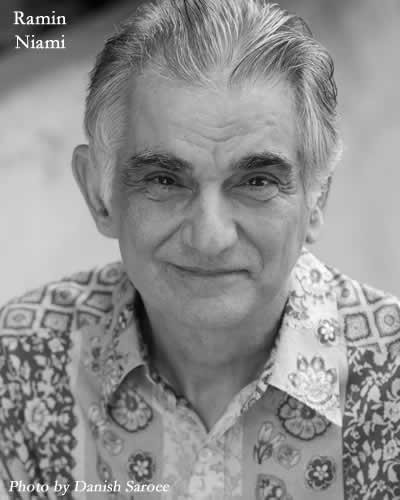 Babe’s and Ricky’s Inn, directed by Ramin Niami, chronicles the last days of one of the most unique and vibrant blues clubs in the world.
Babe’s and Ricky’s Inn, directed by Ramin Niami, chronicles the last days of one of the most unique and vibrant blues clubs in the world.
For over fifty years, Laura Mae Gross ‘Mama’, an African American woman from Mississippi, brought musicians together, regardless of race, age, or gender, in a place where only the music mattered. The club was originally located on legendary Central Ave, in South Central LA. ‘Mama’ created a place where people such as Johnny Lee Hooker, BB King, Albert King, and others shared the stage with newcomers in an open, creative, and safe environment. The film shows many musicians at their homes and on stage. They share their life experiences, their music, and their memories of ‘Mama’. ‘Mama’ acted as a teacher of the blues who’s charm and forceful character served as the reason why Babe’s and Ricky’s Inn became one of the most successful clubs in the world.
The film features original music by some of the most important blues artists alive and showcases some of the most unique blues clubs in LA. Stunning guitar performances and personal stories about the hard blues life come together in a film about what it means to devote your life to music. What is remarkable about Babe’s and Ricky’s Inn is that it attracted generations of young people who listened, learned, and enjoyed.
Ramin Niami, director of Babe’s and Ricky’s Inn, has worked on over twenty documentaries in US, Europe and Iran. As a featuer director: “Somewhere in the City”, starring Sandra Bernhard, Bai Ling, Ornella Muti and Peter Stormare; screened at over 25 international film festivals (HBO and Cinemax). “Paris”, premiered at the Tribeca Film Festival, starring Chad Allen, Bai Ling, James Russo, and Karen Black, ( DEJ/Blockbuster and 20th Century Fox Home Video, Showtime) Upcoming film “Shirin In Love”
Bijan Tehrani: What inspired you to make Babe’s and Ricky’s Inn?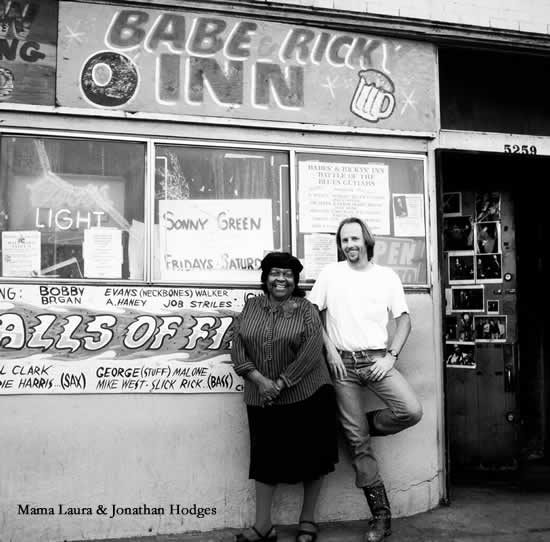
Ramin Niami: I visited Babe’s and Ricky’s Inn some years ago with a friend of mine and saw an 89 year old woman from Mississippi sitting at the door. I heard some incredible music. Then I realized that she’s been running the club for 53 years, and it has this incredible history involving Johnny Lee Hooker, B.B. King, Albert King and Eric Caption. I knew I had to make a film about her and this place.
BT: Music is weaved into the structure of your film; did your love for Blues play a part in making the film?
RN: I am a big fan of all music and I love the blues. I saw some incredible Blues guitarists and a place that was unique. I didn’t want the film to be a concert movie, rather a film that showcases the musicians, their lives and the history of this establishment.
BT: Did you have chance to meet Laura Mae Gross before she passes away and what was your first impression after meeting her?
RN: I met Mama Laura the minute I walked into the club for the first time. I saw that 89-year-old lady, with a big hat, sitting at the door, collecting money and greeting everybody personally. She was warm, charming and forceful. The last time I saw her was after we filmed her 90th birthday party. After we finished filming, she told me that she wanted to live until her 90th birthday, so I would have an ending to the movie.
BT: Please tell us about research stage and pre-production of Babe’s and Ricky’s Inn. Looks like an extensive amount of research should have been done to find the right people to interview.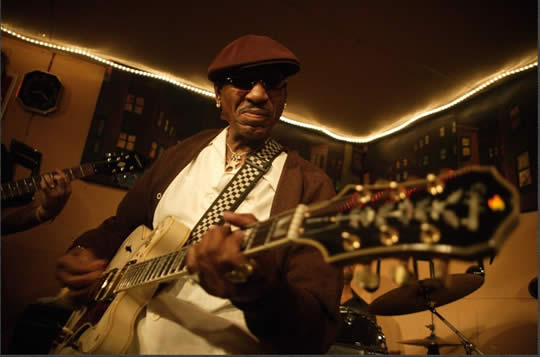 RN: I spent a year with my co-producer Berhooz Ashadi visiting the club, listening to the music and getting to know the musicians. Also, a number of people: Jonathan Hodges, who was the co-owner at the time, Ray Bailey, one of the stars of the film, and Miss Mello, a blues expert and poet were advising me about the club and the musicians.
RN: I spent a year with my co-producer Berhooz Ashadi visiting the club, listening to the music and getting to know the musicians. Also, a number of people: Jonathan Hodges, who was the co-owner at the time, Ray Bailey, one of the stars of the film, and Miss Mello, a blues expert and poet were advising me about the club and the musicians.
I contacted some of the musicians used to play at the club years ago, like Zac Harmon and Dennis Jones. They graciously came back to give us performances and interviews. We also filmed one of the greatest blues players in the world, Guitar Shorty who had a long history with Babe’s and Ricky’s. We filmed him at another great club called Harvell’s in Santa Monica.
I visited other music venues where some of the greats from Babe’s and Ricky’s were performing: The Living Room, 7 Grand, and a wonderful place, which is still hidden in South Central called The Barn Yard. This venue is actually a junkyard that hosts blues performances on the weekend.
BT: You have masterfully managed to express the love of artist that had performed in Babe’s and Ricky’s Inn for Blues, for Laura Mae Gross (Mama) and for the place they have performed in. How did you work with the artists to get them express their feelings so deeply?
RN: In a documentary like this, the most important thing to do is build a level of trust with your subjects. It takes time to build this trust, in order for people to talk about their personal lives and their feelings freely to the camera.
I also shot a lot of the interviews myself, so it could feel more like a conversation between two friends than a camera crew filming an interview. I wanted to create a kind of intimacy between the artists and the audience.
BT: Did you had a script for Babe’s and Ricky’s Inn before you start shooting or you created one as you were in the process?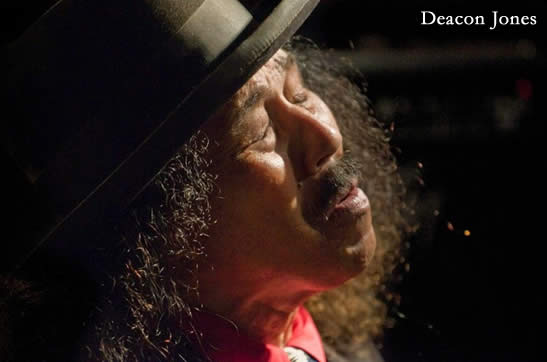
RN: I don’t care for scripted documentaries. I generally don’t like voice over either. I certainly had some ideas about what the structure of the film would be, but as we started filming, Mama Laura got sick, so there were a lot of unexpected events that happened during filming. A lot of the story was created during the long editing process.
BT: Your filmmaking style in Babe’s and Ricky’s Inn, is what I call a “humble” style, letting people get involved with the subject of the film without any kind of show offs with camera movement or using any destructing editing method. How did you come up with the style of your film?
RN: The club was very warm and intimate, so I wanted to create the same intimacy within the film. I think the content dictates the style, and as this was a down-to-earth, humble place, I did not want to distract the audience with fancy angles, camera tricks or jump cuts. I’d like the audience to feel like they’re in the club, or sitting in the living room of these musicians’ homes and listening to them.
BT: How did you pick the artists for the interviews?
RN: One thing that was remarkable about the club is that it had a mixture of people from all different races, colors and nationalities. When we were searching for our subjects, I felt it was important to have a list of people who reflected that. We have many more hours of footage and interviews, but unfortunately there is always a limitation on the length of the film.
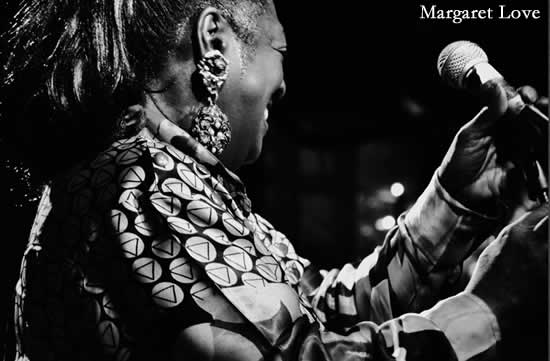 BT: Please tell us about the editing stage as you have been one of the film editors for Babe’s and Ricky’s Inn. How far the editing stage helped the film to find its final form?
BT: Please tell us about the editing stage as you have been one of the film editors for Babe’s and Ricky’s Inn. How far the editing stage helped the film to find its final form?
RN: I am the director and producer of the film, so obviously the editing reflects my vision. The co-editor assembled the many hours of material, and we ended up with a 3 and a half hour long cut of the film that had no real story. At that point, I sat down and looked at it a number of times, and constructed the storyline that reflects the lives of the many musicians, Mama and the club, and would also last 90 minutes. This is the film that you see.
BT: What are the plans for screening of Babe’s and Ricky’s Inn for public?
RN: The film premiered that the Pan African Film Festival in LA in February. We had an incredibly positive response from the audience, which was very gratifying for me as a filmmaker. It was an endorsement by the local community. It won the programmer’s award at the festival. From the audience’s reaction, we knew that we had to make the film available to the general public, and not just blues fans. The film will open at the Laemmle Theatre Monica 4-plex on Friday April 5. In the future we’ll be using a service called Tugg to get the film booked in major cities all over the US, as well as smaller cities where there is a strong blues community.
Also, the film will be available on iTunes Premium, Amazon and other VOD services in the US and Canada on April 9th. This is the best way for us to reach a wide audience.
BT: What are your future plans?
RN: My next film, which is in the final stages of editing, is a romantic comedy called Shirin In Love starring Nazanin Boniadi, Riley Smith, Maz Jobrani, Amy Madaigan, George Wallace, Anahita Khaltabari, Max Amini, and Marshall Manash. It’s a cross-cultural Rom-Com about the Iranian community in Los Angeles. We hope it will be released sometime this summer. The trailer is available on currently YouTube.

